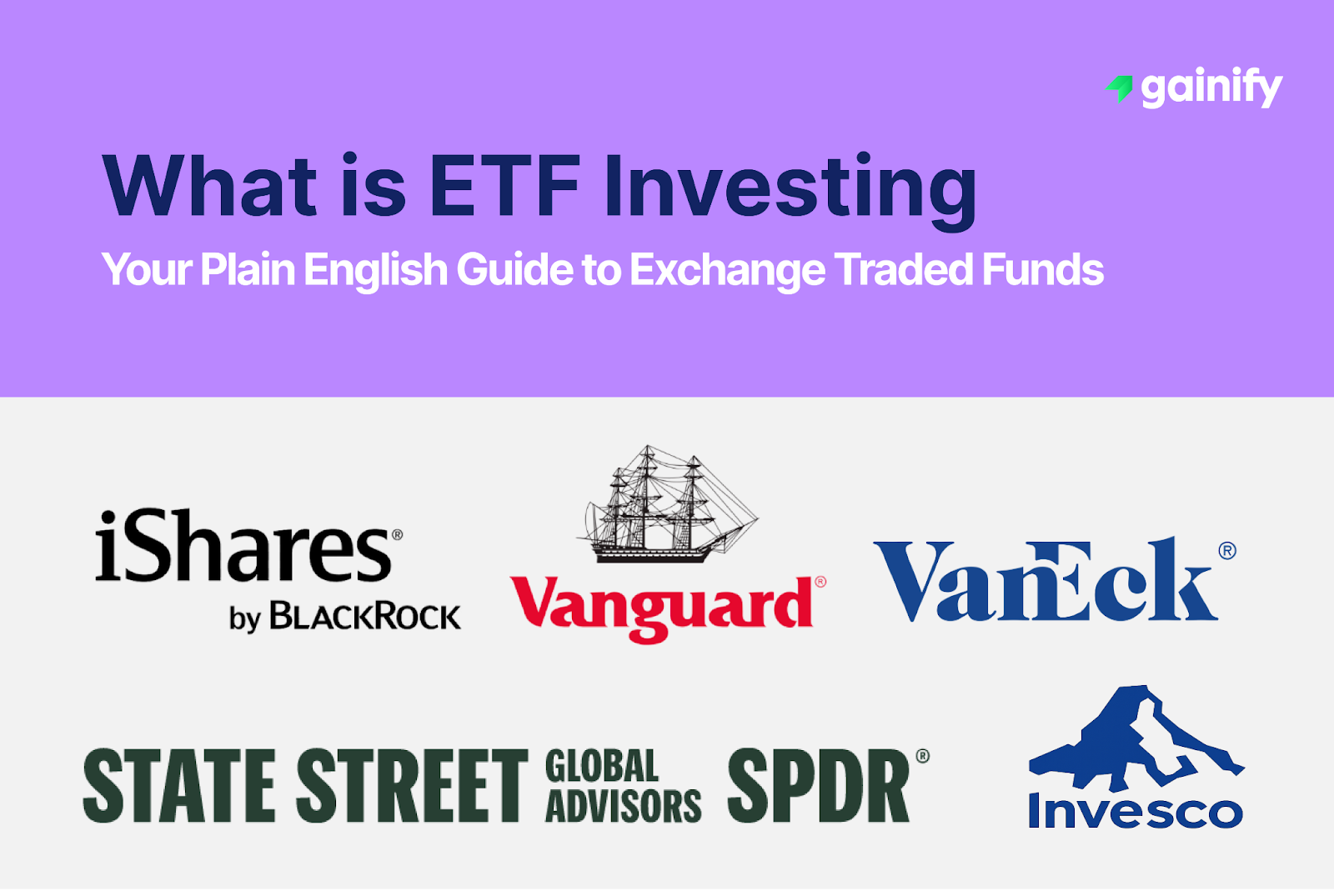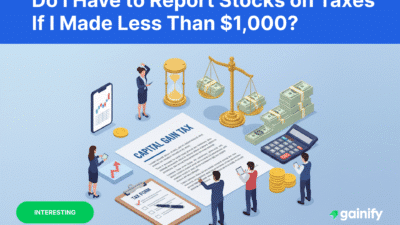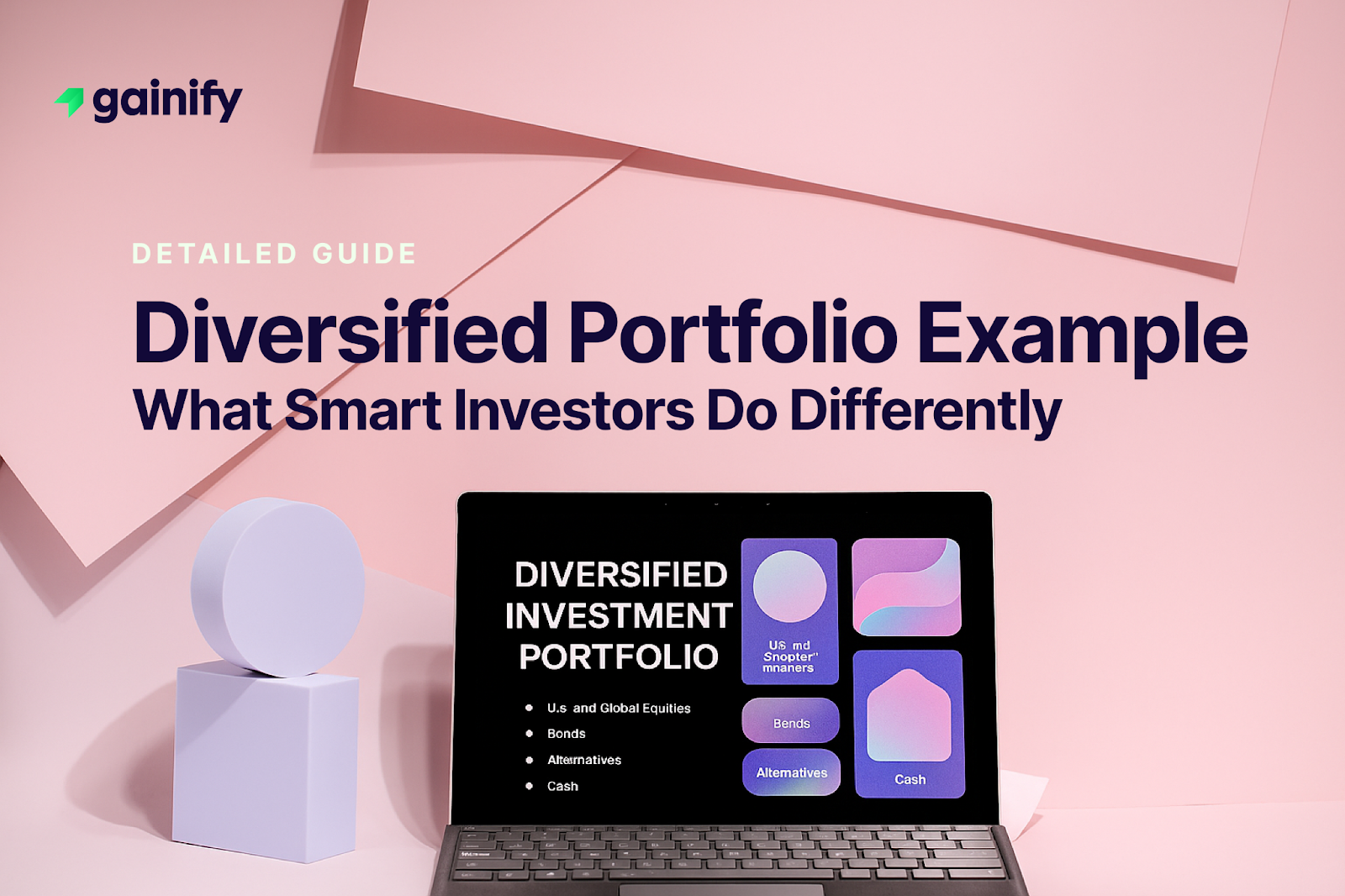Investing in the markets often brings familiar challenges. How do you build a strong, diverse portfolio without getting lost in complex details, facing high costs, or spending endless hours on research? For many, older investment methods seemed either too complicated or simply too expensive. But now, for those looking for a reliable way to navigate the market and grow their wealth, a fundamental and highly useful tool has consistently proven its worth: Exchange Traded Funds, or ETFs.
Think of an ETF as a smart financial tool. It is made to give you easy access to many different parts of the market. With an ETF, you can own a carefully put together collection of investments. These might be hundreds of top company stocks, a wide range of government and corporate bonds, or even important global commodities. All of these are neatly packed into one simple investment product. This proven structure brings together the broad diversity of a traditional mutual fund with the helpful low-cost pricing and flexible trading options you get from individual stocks. This powerful and dependable mix has long made ETFs a key part of modern investment plans worldwide.
I have seen how ETF investing has, over time, become a practical and standard way for everyone to use smart investment strategies. Whether you are just starting out with your first brokerage account, or you are an experienced investor looking to improve your portfolio, understanding and using ETFs is now a vital part of managing your money well. ETFs are very flexible. You can use them for everything from building the main part of your long-term investments to targeting specific industries or regions around the world. They are perfect for meeting your unique investment needs.
To help you with this important part of modern finance, we will now explain exactly what ETFs are. We will thoroughly describe how they work in today’s market and why informed investors prefer them. Our detailed journey will cover their main benefits and different types. Importantly, we will also share a balanced view of their possible downsides. This will give you a complete and confident understanding before you wisely start your investment journey.
Understanding ETFs: Key Characteristics and What You Are Really Buying
At its core, ETF investing uses a simple but clever idea: an ETF is a shared investment that holds financial assets like stocks, bonds, or commodities.
Here are the key characteristics that define ETFs and what you are truly getting when you invest:
- Trade like stocks: Unlike traditional mutual funds, ETFs trade on stock exchanges like the New York Stock Exchange (NYSE) or the London Stock Exchange (LSE), similar to regular company shares. This means their market prices can change throughout the day. You can buy or sell them any time the market is open.
- Built-in design choices: Most ETFs are made to follow a specific market index. For example, an index ETF might track the S&P 500, the Dow Jones, or the Nasdaq composite index, or a global bond index. This method means the ETF aims to perform like its chosen benchmark, instead of trying to beat the market by picking specific stocks. What you are “really buying” depends on the index’s rules: Is it weighted by market size (larger companies have more impact)? Is it equal-weighted (every company matters equally)? Or does it focus on specific traits like low risk or strong growth?
- Low operating costs: Because they usually follow a passive strategy, ETFs generally have much lower fees, called expense ratios or a Management Expense Ratio (MER), compared to actively managed funds. They do not need big teams or frequent trading, which keeps their costs down.
- Special creation and redemption: ETFs have a unique system handled by large financial groups called authorized participants. These groups can create or buy back large blocks of ETF shares directly with the fund. This process helps keep the ETF’s market price very close to the value of its underlying assets, even if trading volume changes. This system is watched over by regulators like the Securities and Exchange Commission (SEC), which protects investors.
- Transparency: Most ETFs show what they hold every day. This means you always know exactly what you own.
What You’re Really Buying with an ETF
On the surface, ETFs seem simple: a diverse group of investments you can trade like a stock. But if you look closer, every ETF involves specific choices in its design. These choices affect what you truly own and how your investment might perform. Understanding these details is vital for making smart investment decisions.
Consider these important points:
- Underlying Exposure: An ETF offers diversity, but it is key to know what kind of investments you are actually getting. Does the ETF focus on large companies, or is it evenly spread across all sizes? Does it lean towards certain investment styles, like companies that are considered cheap or those that are growing fast? Your investment’s performance depends on these design choices.
- Concentration Levels: Even ETFs that seem “diverse” can be very focused on a few investments. Some broad market or industry-specific ETFs might have 30% or more of their value tied to just a handful of very large companies. This means a big part of your investment’s success could depend on how a few companies perform, which can reduce real diversity.
- Liquidity During Volatility: An ETF’s shares might trade a lot, suggesting it is easy to buy and sell. However, the ease of trading the ETF shares might not match how easy it is to trade the actual investments inside it. This is especially true for ETFs that hold investments in markets that do not trade often, like some bonds or emerging market investments. During sudden market drops, the difference between buying and selling prices for the ETF can grow wide. This makes it more expensive or harder to trade at good prices.
This deeper look at an ETF’s contents and how its index is built helps you match it precisely with your investment goals. It moves your understanding beyond simply knowing the ETF’s ticker symbol.
Key Advantages of ETF Investing
The appeal of ETFs goes far beyond simply tracking major market indexes. Their flexible design allows for many investment strategies and specific focus areas. This versatility is a key reason why Exchange Traded Funds have become essential for various investor goals.
Here are the main advantages of using ETFs:
- Broad Diversification: ETFs instantly spread your money across many investments. These can be in different industries, countries, or types of assets. This helps lower the specific risk linked to any single stock or bond. Large market ETFs, such as the Vanguard Total Stock Market ETF (VTI) or S&P 500 ETFs like the Vanguard S&P 500 ETF (VOO) and SPDR S&P 500 ETF Trust (SPY) (often called Core ETFs), offer excellent basic portfolio diversity.
- Lower Costs: As mentioned, ETFs generally have much lower operating expense ratios and Management Expense Ratios than actively managed funds. This makes them a cost-effective investment choice.
- Flexible Trading: Unlike mutual funds, which trade only once a day after the market closes, ETFs trade like stocks on exchanges throughout the day. This means you get real-time prices and the freedom to buy or sell at market prices any time the market is open.
- Accessibility and Low Minimums: ETFs are easy to buy through most brokerage accounts. They often have a low investment minimum, letting you buy even one share. This makes sophisticated diversification available to more people.
- Tax Efficiency: Because of how they are structured, ETFs tend to pass on fewer taxable capital gains to investors compared to traditional mutual funds. This can mean greater tax efficiency for your investment accounts.
- Strategic and Targeted Exposure: Beyond covering broad markets, ETFs are highly useful tools for making precise investment decisions, focusing on specific industries, or spreading investments globally. Smart investors increasingly use ETFs for:
- Tactical overweights: Betting more on certain industries like energy, tech, or defense when market signals suggest it.
- Factor exposure: Focusing on investment characteristics like low-volatility, value, or momentum.
- International plays: Investing in global markets, with options that protect against currency changes.
- Fixed-income strategies: Balancing different types of bonds to meet specific income and risk goals, using fixed-income ETFs or Short-term ETFs that hold money-market instruments.
- Commodity exposure: Investing in raw materials like gold (e.g., a physically-backed ETF holding gold bars) or oil (often through futures contracts).
- Specialty themes: This includes ESG ETFs for socially responsible investing, and cryptocurrency ETFs like Bitcoin ETFs for regulated access to digital assets.
Key Considerations and Potential Downsides of ETFs
While ETF investing offers clear and significant benefits, a balanced view requires acknowledging certain details and situations where they might not be the perfect fit for every investor or every plan. It is essential to understand these aspects to make truly informed decisions.
Here are some key considerations and potential downsides of ETFs:
- Index crowding risk: Many ETFs that are weighted by company size tend to put more money into stocks that are already expensive. This can create risky valuations in certain parts of the market, especially when a few large companies grow very fast. This can expose investors to higher risk during market downturns.
- Liquidity mirage: ETF shares might seem very easy to buy and sell, with lots of trading activity. However, the ease of trading the ETF shares does not always perfectly match how easy it is to trade the actual investments held inside the ETF. This is particularly true for ETFs that hold investments in less active markets, such as high-yield bonds or emerging market debt. During sudden market selloffs, the difference between buying and selling prices for the ETF can become much larger, making trades more costly or difficult at good prices.
- Tracking drift: This is the small difference between an ETF’s performance and the index it tracks. While usually minor for large, popular ETFs, specialized or complex ETFs (like synthetic ETFs that use derivatives) often differ more from their benchmarks. This can happen because of fees, how the fund picks its investments, or costs from adjusting its holdings.
- Passive does not mean risk-free: Buying the market through an ETF does not remove all risk; it simply groups risks differently. You are still exposed to larger market cycles, global political changes, and imbalances in different industries. The idea that passive investing is completely “safe” can be misleading. It means accepting market risk, which can still lead to significant changes in your investment’s value.
- Trading costs: While the Management Expense Ratios of ETFs are generally low, because they trade like stocks on exchanges (like the Chicago Board Options Exchange (CBOE)), you pay brokerage fees each time you buy or sell shares. For investors who trade very often or invest small amounts regularly, these costs can add up and reduce returns, possibly canceling out the benefit of low ongoing fees.
- Complexity of specialized ETFs: The rapid increase in very specialized or complex ETFs, such as synthetic ETFs that use things like futures contracts to track an index, or leveraged and inverse ETFs, means that not all Exchange Traded Funds are suitable for the average investor. These products carry much higher risks and are designed for advanced strategies. This highlights how important it is to fully understand an ETF’s holdings and how it works before investing.
Who Should Consider ETF Investing (and Who Might Reconsider)
Knowing the details of ETFs helps make it clear who can benefit most from them, and for whom other investment approaches might be better.
ETFs are generally ideal for:
- Strategic asset allocators: Investors who want diversified, low-cost exposure across different types of investments to build and maintain a long-term portfolio.
- Tax-aware investors: Those looking to maximize long-term growth in taxable accounts, taking advantage of the tax benefits common in many ETF structures.
- Portfolio builders seeking precision: Investors who need specific exposure to industries, investment traits (like value or momentum), or countries without the time or effort of researching and picking individual stocks.
ETFs might be less ideal for:
- Active traders chasing short-term alpha: While ETFs trade throughout the day, trading commissions and bid-ask spreads can quickly add up for very frequent trading. This can reduce potential short-term profits.
- Investors expecting “alpha” from beta troducts: Those who misunderstand that most ETFs that track an index aim to match the market’s performance (beta), not outperform it (alpha).
- Those unaware of what’s inside the ETF: Investors who only look at the ticker symbol without understanding the actual investments, how they are weighted, or the specific risks connected to what the ETF holds.
Examples of ETFs
Here are some of the largest and most widely used ETFs, known for their low costs and broad market exposure. These examples are primarily U.S.-focused, as they represent some of the biggest options available to investors globally. Note that Vanguard, BlackRock and State Street are prominent providers of ETFs.
Fund Name (Ticker) | Type (ETF/Mutual Fund) | Tracks Index | Expense Ratio | Assets Under Management (AUM) | Key Characteristics |
SPDR S&P 500 ETF Trust (SPY) | ETF | S&P 500 | 0.0945% | $638 billion | One of the oldest and most liquid S&P 500 ETFs, often used by institutional investors. |
Vanguard S&P 500 ETF (VOO) | ETF | S&P 500 | 0.03% | $684 billion | Extremely low cost, broad market exposure to the 500 largest U.S. companies. |
iShares Core S&P 500 ETF (IVV) | ETF | S&P 500 | 0.03% | $628 billion | Competitively priced, highly diversified, similar to VOO. |
Vanguard Total Stock Market ETF (VTI) | ETF | U.S. Total Stock Market | 0.03% | $507 billion | Covers entire U.S. equity market, providing extensive diversification across all sizes. |
iShares Core U.S. Aggregate Bond ETF (AGG) | ETF | U.S. Aggregate Bond | 0.03% | $128 billion | Broad exposure to the U.S. investment-grade bond market across various durations. |
Vanguard Total Bond Market ETF (BND) | ETF | U.S. Aggregate Bond | 0.03% | $131 billion | Diversified across various U.S. bonds, known for its low expense. |
Schwab U.S. Broad Market ETF (SCHB) | ETF | Dow Jones U.S. Broad Stock Market | 0.03% | $34 billion | Tracks a comprehensive U.S. market benchmark index, encompassing a wide range of companies. |
Note: Expense ratios and AUM can change. Always verify the latest information from the fund provider before investing.
Frequently Asked Questions (FAQ)
Q1: What exactly is an Exchange Traded Fund (ETF)?
A1: An ETF is an investment product that holds a collection of financial assets like stocks, bonds, or commodities. It trades on stock exchanges throughout the day, much like a single stock, with real-time pricing. This allows investors to buy or sell shares of the fund at any time during market hours through their brokerage account.
Q2: How do ETFs differ from traditional mutual funds?
A2: The main difference is how they are traded. ETFs trade on exchanges, meaning their price changes throughout the day and you buy/sell them from other investors. Mutual funds are typically bought and sold directly from the fund company at the end of the trading day, based on their Net Asset Value (NAV). ETFs also generally have lower operating expense ratios and often offer greater transparency of holdings.
Q3: Are ETFs only for passive investing?
A3: While most ETFs are designed for passive investing by tracking a specific index (known as index ETFs), there are also active ETFs where a fund manager makes investment decisions to try and outperform the market. The vast majority of popular and low-cost ETFs follow a passive strategy. This distinction is crucial when considering your investment approach.
Q4: What are the main benefits of investing in ETFs?
A4: Key benefits of ETF investing include low costs, broad diversification, flexibility, and transparency. They also offer tax efficiency and often have a low investment minimum of just one share.
Q5: Are there any downsides or risks to ETFs?
A5: Yes, ETFs are not without risks. Downsides can include brokerage fees (if you trade frequently), potential tracking error, and the complexity of highly specialized ETFs, such as synthetic ETFs. All ETFs are also subject to market risk, meaning their value can decrease with overall market downturns or specific liquidity risk in less popular funds.
Q6: Can I use ETFs for specific investment goals, like investing in a particular industry? A6: Absolutely. ETFs are highly versatile. Beyond broad market coverage, you can find sector-specific ETFs that focus on particular industries (like technology or healthcare), geographic regions (like emerging markets), or even specific asset classes like commodities (e.g., a physically-backed ETF holding gold bars) or bonds (fixed-income ETFs including Short-term ETFs that hold money-market instruments).
Q7: How do I choose the right ETF for me?
A7: Choosing an ETF involves considering your investment goals, risk tolerance, and time horizon. For self-directed investors, look at the Management Expense Ratio (lower is generally better), the index it tracks (ensure it aligns with your strategy), its trading volume (for good liquidity), and its past performance (though past performance does not guarantee future results). Many Core ETFs also offer Distribution Re-Investment Plans for automatic investing. Consulting with a financial adviser and using financial planning tools can also be beneficial.
Key Takeaways
Exchange Traded Funds (ETFs) have reshaped the investment landscape, offering a powerful blend of diversification and real-time pricing flexibility. Here are the core insights for any investor navigating this terrain:
- ETFs as strategic tools: ETFs are not merely efficient vehicles for passive index exposure; they are high-precision tools for implementing nuanced investment theses, sector tilts, and global allocation strategies. Understanding what you are truly buying (e.g., market-cap vs. equal-weighted exposure, concentration levels, and underlying liquidity) is paramount.
- Accessible diversification with nuance: ETFs empower you to own a broad basket of underlying assets, whether stocks, bonds, or commodities, within a single security. This simplified diversification is a cornerstone of sound risk management, but remember that even diversified ETFs are exposed to broader market cycles, geopolitical shifts, and sector imbalances. Passive investing mitigates some risks, but it does not make your investment entirely safe from market downturns.
- Cost-effective and transparent: Most ETFs are built on a passive, index ETF strategy, which translates into significantly lower operating expense ratios and Management Expense Ratios compared to traditional actively managed funds. Their transparent holdings mean you always know what you’re invested in.
- Flexibility for every strategy: Unlike mutual funds, ETFs trade throughout the day on exchanges like the New York Stock Exchange or the Chicago Board Options Exchange (CBOE), offering the trading flexibility of individual stocks. This makes them suitable for everything from building a long-term core portfolio to making more tactical, short-term allocations in specific sectors or regions, including specialized ones like video game stocks.
- Critical risk awareness is essential: While beneficial, ETFs come with specific considerations. Be aware of potential index crowding risk, the “liquidity mirage” (where ETF shares are liquid but underlying assets are not), and tracking drift (especially in niche or synthetic ETFs). These factors highlight that careful due diligence is vital.
- The ETF is the tool, not the strategy: ETFs are the infrastructure of modern investing, enabling a wide range of approaches, but your outcomes ultimately depend on how you deploy them, what market conditions you are in, and whether your expectations align with the capabilities of the tool you are using. Investing in ETFs is no longer primarily about access; it is about precise execution.
Embracing ETF investing means equipping yourself with a versatile and efficient financial instrument. It empowers you to take control of your financial journey with clarity and confidence, allowing your investments to work diligently for you through a disciplined and accessible approach.




